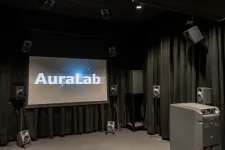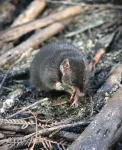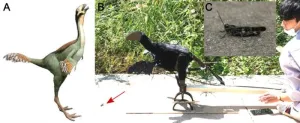(Press-News.org) Diagnosis of sepsis in children has been improved based on new research findings. An international research team co-led by the Luregn Schlapbach from the University and the University Children’s Hospital Zurich harnessed artificial intelligence to analyze data from over 3.5 million children suffering from this life-threatening disease.
Sepsis is a life-threatening infection that can lead to organ failure. Every year, around 3 million children worldwide die of the disease. Of those who survive a sepsis infection, every third child suffers long-term consequences, sometimes severe. Until now, there were no evidence-based criteria for diagnosing sepsis in children.
In a big-data project spanning several years, an international task force analyzed data from over 3.5 million children suffering from sepsis. The researchers applied machine-learning methods to extrapolate from the data analysis evidence-based criteria for diagnosing sepsis in children. They used their findings to develop a novel scoring system, called the Phoenix Sepsis Score. The scoring system enables physicians to quickly and reliably determine the severity of organ failure in children with sepsis.
Global relevance
“These findings are hugely significant. For the first time, we have standardized and evidence-based criteria that can be used to improve the early detection of this serious disease in the future,” says Prof. Dr. med. Luregn Schlapbach. Schlapbach, who led the study together with Prof. Scott Watson of the Seattle Children’s Hospital, USA, is professor of pediatric intensive care medicine at the University of Zurich and senior physician in intensive care medicine at the University Children’s Hospital Zurich.
The big-data project included data from developing countries in South America, Africa and Asia – a first for a sepsis study of this kind. This means the new criteria are equally suitable for small and large hospitals in different types of healthcare systems anywhere in the world.
The international significance of the findings led to the study being published in a double publication in the renowned JAMA journal.
National action plan against sepsis
The University Children's Hospital is actively involved in the Swiss Sepsis National Action Plan with a focus on children. Specialists from the hospital also work closely with the University of Zurich to improve the diagnosis and treatment of sepsis with the help of artificial intelligence, new biomarkers and other innovative methods.
The current study is also important for the National Program for Quality Improvement in Sepsis, funded by the Swiss Quality Commission. The aim of the program is the implementation of the Swiss Sepsis National Action Plan to improve prevention, early detection, treatment and follow-up care of sepsis infections in children and adults.
END
Sepsis in children: Improved diagnosis thanks to new global criteria
2024-01-25
ELSE PRESS RELEASES FROM THIS DATE:
Purdue Innovates licenses novel short-stature corn technology to Ag Alumni Seed
2024-01-25
WEST LAFAYETTE, Ind. – The Purdue Innovates Office of Technology Commercialization has issued a worldwide, exclusive license for a short-stature corn inbred called D16 to Romney-based Ag Alumni Seed.
The license is limited to popcorn and doesn’t apply to dent corn, field corn or sweet corn.
Traditional breeding techniques
Ag Alumni Seed has supported multiple research projects at Purdue University with both financial and in-kind contributions—such as the use of land, equipment and facilities. Jay Hulbert, the company’s president and CEO, said development of D16 began with research that Guri Johal conducted at the company’s ...
ACC Cardiovascular Summit equips CV team to transform care, address emerging trends
2024-01-25
The American College of Cardiology’s Cardiovascular Summit (CV Summit) will take place on February 1-3 in Washington, DC. Bringing together all members of the CV team, the educational event highlights best practices for creating a more efficient, effective and equitable health care system.
As health care systems continue to evolve, CV teams must be equipped to address these emerging trends and changes in operations, economics and the workforce. This year’s CV Summit will feature an array of educational sessions for clinicians, administrators and executives that encompass a multitude of practice models. Participants will learn how ...
Virtual noise assessment for passenger jet of the future
2024-01-25
Aircraft noise is often a nuisance for people living near airports and in flight paths – and, in the worst case, a health hazard: from sleep disorders to cardiovascular diseases. According to a report by the European Environment Agency, around four million people in Europe were exposed to excessive levels of aircraft noise in 2017. New types of aircraft with a blended wing body (BWB), whose fuselage merges seamlessly into the wings – with less air resistance and lower fuel consumption – are seen as a beacon of hope to alleviate this burden. And with lower noise emissions towards the ground if the engines are mounted on top of the fuselage.
Auralization in the lab
Although ...
MD Anderson research highlights for January 25, 2024
2024-01-25
HOUSTON ― The University of Texas MD Anderson Cancer Center’s Research Highlights showcases the latest breakthroughs in cancer care, research and prevention. These advances are made possible through seamless collaboration between MD Anderson’s world-leading clinicians and scientists, bringing discoveries from the lab to the clinic and back.
Recent developments at MD Anderson include a combination treatment for KRAS G12C-mutant colorectal cancer; using liquid biopsies to classify small-cell lung cancer subtypes; an artificial intelligence model to improve non-small cell lung cancer classification; ...
Retinal photoreceptors use dual pathways to tell brain ‘I’ve seen the light!’
2024-01-25
FOR IMMEDIATE RELEASE
Working with mammalian retinal cells, neuroscientists at Johns Hopkins Medicine have shown that, unlike most light-sensing cells (photoreceptors) in the retina, one special type uses two different pathways at the same time to transmit electrical “vision” signals to the brain. The work also reveals that such photoreceptors, according to the researchers, may have ancient origins on the evolutionary scale.
This and other findings, published Dec 18, in PNAS, “shed scientific as well as literal light” on a decades-long mystery ...
GSA members call on senate to support higher standards for assisted living facilities
2024-01-25
Speaking today at a hearing of the U.S. Senate Special Committee on Aging, Gerontological Society of America members Jennifer Craft Morgan, PhD, FGSA, and Richard J. Mollot, JD, called on lawmakers to enact policies that enable greater state and national oversight of assisted living facilities, and that bolster the workforce and engagement of residents and care partners.
Senators convened the hearing, titled “Assisted Living Facilities: Understanding Long-Term Care Options for Older Adults,” to examine challenges faced by assisted living facility residents. Committee Chair Bob Casey recently sent letters to the CEOs of three ...
American College of Radiology releases joint statement on the use of AI tools in radiology
2024-01-25
Philadelphia, January 25, 2024 – The American College of Radiology® (ACR®), working in close collaboration with four other radiology societies from around the world, have issued a joint statement on the development and use of artificial intelligence (AI) tools in radiology. This groundbreaking joint statement is openly available in ACR’s Journal of the American College of Radiology, published by Elsevier. It explores the potential challenges and ethical and safety concerns related to integrating this new technology into radiology practice.
“Developing, Purchasing, Implementing and Monitoring AI Tools ...
Advancements in IBD care: Natural supplements, disease monitoring via sweat and more
2024-01-25
Las Vegas, NV (Jan. 25, 2024) — The Crohn’s & Colitis Foundation® and the American Gastroenterological Association (AGA) are proud to host the annual Crohn’s & Colitis Congress®, taking place on Jan. 25-27, 2024, in Las Vegas. The Crohn’s & Colitis Congress convenes researchers, clinicians, and other professionals involved in the care of patients with inflammatory bowel disease (IBD) to share the latest research breakthroughs and treatment advancements in IBD. During this premier meeting, we’ll review the latest advancements in IBD care that aim to improve the lives of the millions of Americans living with Crohn’s disease ...
These male marsupials give up sleep for sex
2024-01-25
All animals need sleep. When humans or animals don’t get enough, it can lead to trouble paying attention, irritability, and other ill effects. And yet, researchers reporting in the journal Current Biology on January 25 have made the surprising discovery that a small Australian marsupial called an antechinus will sacrifice hours of sleep per night to make more time for sex during the mating season.
The researchers say the multi-year study is the first to show direct evidence for this type of sleep restriction in any land-dwelling mammal. It’s a trade-off between sleep and reproduction that they say is likely driven by ...
Dinosaurs might have used feathers on forelimbs and tails to flush and pursue their prey – a new hypothesis integrates morphology, behavior and neurobiology
2024-01-25
What are the origins of wings and tails in birds? This is one of the key questions in the evolution of animals. It has long been accepted that their evolution began in feathered dinosaurs. Some of these dinosaurs had feathers on the tails and small wing-like feathers on their forelimbs (arms). These small wing-like structures called ‘proto-wings’ are composed of special feathers known as pennaceous feathers — the stiff feathers found in the wings and tails of birds. The ancient form of these feathers first emerged in dinosaurs during the Jurassic Period, and these dinosaurs, called ...



